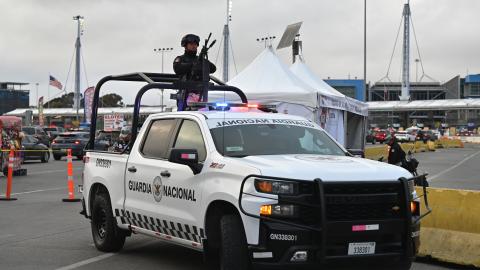Guerrillas in Iranian Kurdistan attacked government officials this weekend. The New York Times reports
Gunmen ambushed a car carrying a lawmaker and a local governor on Sunday in Iran’s restive Kurdish region, state news media reported. Both men were wounded, and the driver and a veterinarian traveling with them were killed.
The lawmaker, Heshmatollah Falahatpisheh, a member of a key foreign council in Iran’s Parliament, escaped with minor injuries, according to the Mizan news agency.
Mr. Falahatpisheh and the others were traveling in a sport utility vehicle near Iran’s border with Iraq, apparently without security forces protecting them. As they were driving near the county of Dalahu, four men fired on their car. The governor, Faramarz Asghari, was hit several times and was reported to be in critical condition.
In recent weeks, Iran’s Kurdish regions have seen an upsurge in violence, with several clashes erupting between Iran’s Islamic Revolutionary Guards Corps and Kurdish fighters belonging to the Democratic Party of Iranian Kurdistan and Pejak, an offshoot of the Kurdistan Workers’ Party, better known as P.K.K. According to official reports and statements by the groups, dozens of people have been killed on each side, although none of those claims could be verified.
It’s worth remembering that Iran is, as the Soviet Union and Yugoslavia were, a multinational, multi-confessional state and only just over half the citizens are of Persian ethnic origin. The real threat to Iran from the violence in Syria and Iraq is not that a jihadi Sunni army will storm the frontier, but that the chaos and disintegration will spread across the border. With tribal and ethnic violence on the east (Afghanistan), to the north (Russia’s Caucasus, Armenia, Azerbaijan and Georgia are all wrapped up in various frozen and unfrozen conflicts), to the south (in both Iranian and Pakistani Baluchistan, ethnic insurgents are active), and to the west in Iraq, Iran’s neighborhood is not a healthy one right now.
Currently, a mix of ideology (militant Shi’ism against a hostile world), strong domestic security forces, and the clerical and religious networks loyal to the ruling mullahs help hold the country together. But the revolutionary ideology is increasingly hollow, the security and religious networks corrupt and unpopular, and restlessness among both Persian and non-Persian Iranians is growing.
Iran’s ruling authorities are strong, clever and determined. But they are not without their worries.
















